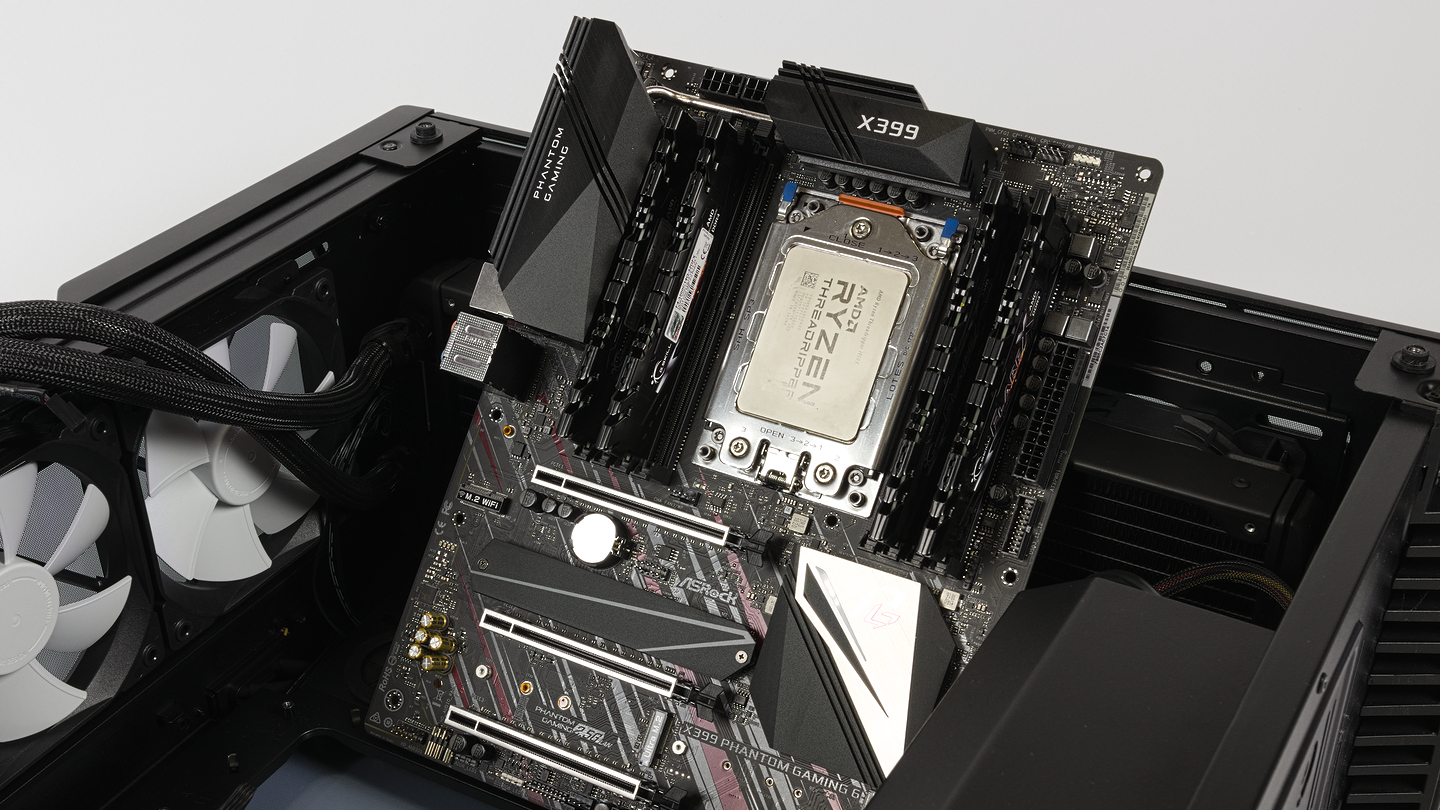Tom's Hardware Verdict
ASRock does an excellent job of tweaking its design to shave money off its budget-priced X399 board, delivering an adequately equipped and modestly performing motherboard. Though not quite on-par with typical X399 offerings, this interpretation of the chipset may force others to lower the cost of entry into AMD's HEDT space.
Pros
- +
Extreme value
- +
Meets performance expectations
- +
Easy installation
Cons
- -
Mixed overclocking results
- -
Not the full X399 experience
Why you can trust Tom's Hardware
Introduction and Product Description
AMD’s X399 high-end desktop (HEDT) platform has found plenty of fans over the past few years, fulfilling the need for lots of processor cores, memory capacity and bandwidth, a plethora of I/O options, along with build quality that's able to handle our large budget systems. But with the the arrival of second-gen Threadripper CPUs and third-gen models coming later in 2019, first-gen 1000 series Threadripper prices are falling into ranges comparable to the newer 2000 series consumer Ryzen CPUs. Those price drops are likely luring in new potential HEDT buyers, but most X399 boards are priced north of $300. ASRock's X399 Phantom Gaming 6 may be just the board for those budget-sensitive builders edging into HEDT territory. Its $240 (£182) price is cheaper than anything else available on this platform by between $30 and $60 (around £181), depending on where you shop.
Specifications
| Socket | AM4 |
| Chipset | AMD X399 |
| Form Factor | ATX |
| Voltage Regulator | 6+2 Phases |
| Video Ports | ✗ |
| USB Ports | 10 Gbps: (1) Type A, (1) Type C 5Gb/s: (8) Type A |
| Network Jacks | (1) 2.5Gb Ethernet (1) Gigabit Ethernet |
| Audio Jacks | (5) Analog, (1) Digital Out |
| Legacy Ports/Jacks | (1) PS/2 |
| Other Ports/Jack | ✗ |
| PCIe x16 | (3) v3.0 x16 |
| PCIe x8 | ✗ |
| PCIe x4 | ✗ |
| PCIe x1 | ✗ |
| CrossFire/SLI | 4x / 4x |
| DIMM slots | (8) DDR4 |
| M.2 slots | (1) PCIe v3 x4 30/42/60/80/110mm (1) PCIe v3 x4 42/60/80mm (1) PCIe v3 x4 / SATA3 30/42/60/80mm (1) E Key for 2230 WiFi |
| U.2 Ports | ✗ |
| SATA Ports | (8) 6Gb/s |
| USB Headers | (2) 5Gbps (2) USB 2.0 |
| Fan Headers | (5) 4-pin |
| Legacy Interfaces | (1) COM, (2) Front Panel Audio |
| Other Interfaces | (1) TPM, (2) RGB, (1) Addressable LED, (1) AMD LED Fan |
| Diagnostics Panel | ✗ |
| Internal Button/Switch | (1) Clear CMOS, (1) Power-ON, (1) Rese |
| SATA Controllers | Integrated (0/1/10) |
| Ethernet Controllers | (1) Dragon RTL8125AG (1) Intel® I211AT |
| Wi-Fi / Bluetooth | ✗ |
| USB Controllers | ✗ |
| HD Audio Codec | ALC1220 |
| DDL/DTS Connect | ✗ / ✗ |
| Warranty | 3 Years |
ASRock has led the charge of X399 value boards overall, sacrificing some IO and a few features to reach lower price points, and the ASRock X399M Phantom Gaming 6 takes that approach one step further. So there will be sacrifices if you opt for this board, which we'll detail below. But if you're after the ultimate value so you can put more of your budget into a higher-end CPU, this board is tough to beat

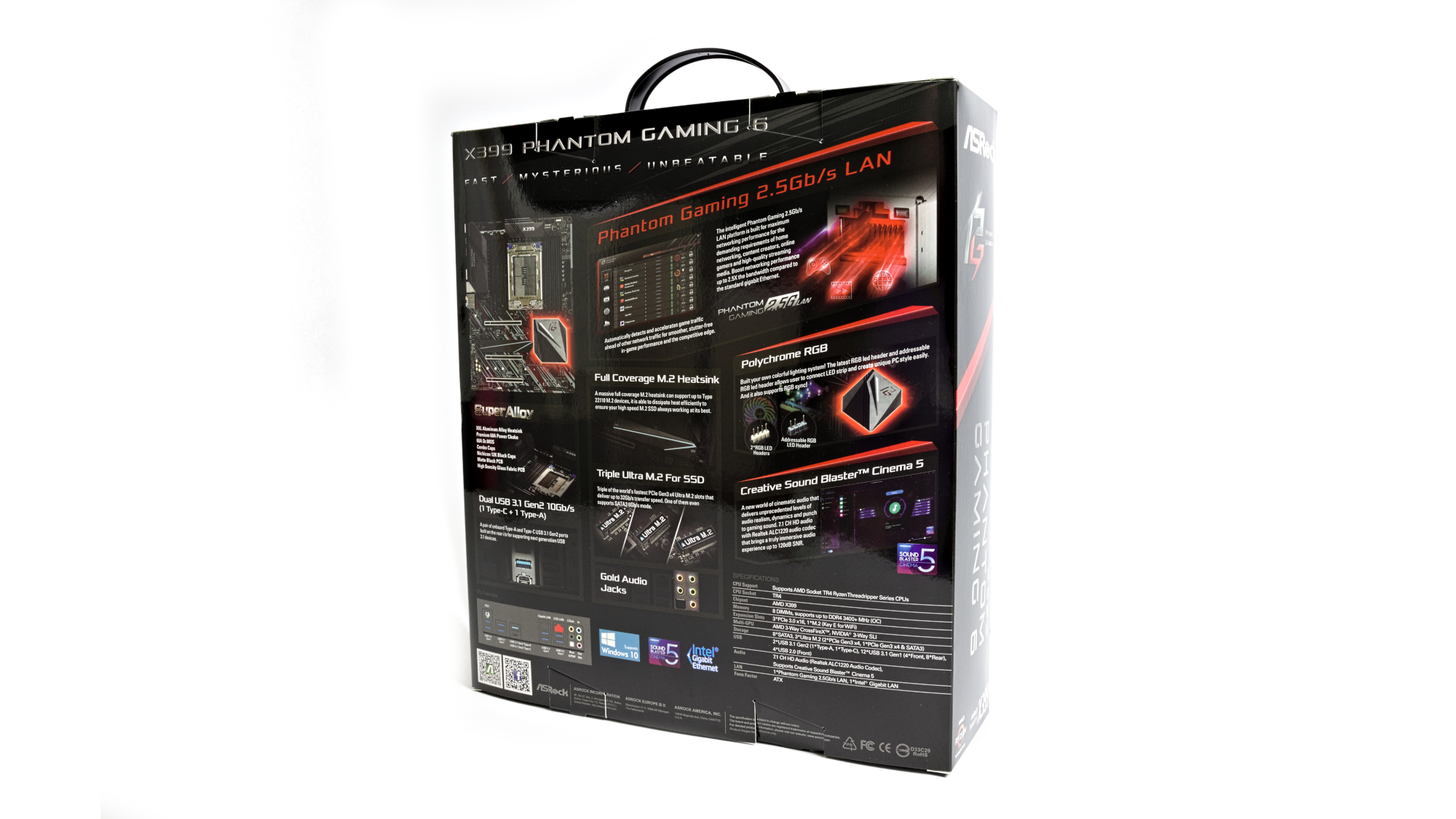

The Phantom Gaming 6 borrows a bit here and there from the company's other brands, in its quest to keep costs low while still delivering a desirable product. The packaging reminds us of the Fatal1ty boards with its glossy front and red highlights, while the reduced accessory kit is a stark deviation from previous, pricier X399 options. Plenty of documentation is bundled with the package, along with four SATA cables, an SLI bridge and a full-height I/O adapter for a Wi-Fi antenna, in case you plan to buy a third-party adapter. There is no wireless connectivity on the board itself.



Eight USB3.1 Gen1 ports are available for the rear I/O, along with one Type-A and one Type-C of the faster USB3.1 Gen2 variety. Legacy input devices are supported with a lone PS/2 port, and the now-standard combination of five analog audio and one SPDI/F digital port provide the connection to the ALC1220 codec. Our first glimpse of some better-than-basic features on the Phantom Gaming 6 is Realtek’s RTL8125AG 2.5Gb Ethernet controller. Note, though, that not all high-speed network gear will accept this connection speed. Our own 10Gb Intel NIC did not support this speed, so check with your infrastructure’s documentation for compatibility. If 2.5Gbps is not a requirement, the Intel I211AT chip is equipped to provide standard Gigabit networking as well. As noted earlier, Wi-Fi is a notable omission from this product: ASRock opted to include an M.2 E-Key slot for users that want to add Wifi to save some cost with the board. Honestly, this is an excellent move since most higher-end builds are hardwired into Ethernet, and many builders will think that the included antenna bracket is useless without the lead cables.



We continue to see instances of cost savings across the board in the lack of superfluous IO covers. The 45-degree colored accents across the board aren’t too distracting aesthetically, but we p[refer the design of value boards from Asus and MSI to what's here.
The bottom edge gives us two front panel audio ports (only 1 usable at a time), addressable LED and RGB headers, a trusted-platform module (TPM) connection, two 4-pin fan headers, two USB 2.0, one USB3.0, and front-panel chassis connections. For test bench users, there are buttons instead of headers for our power, reset, and CMOS clearing needs, though we do miss a numeric debug LED.

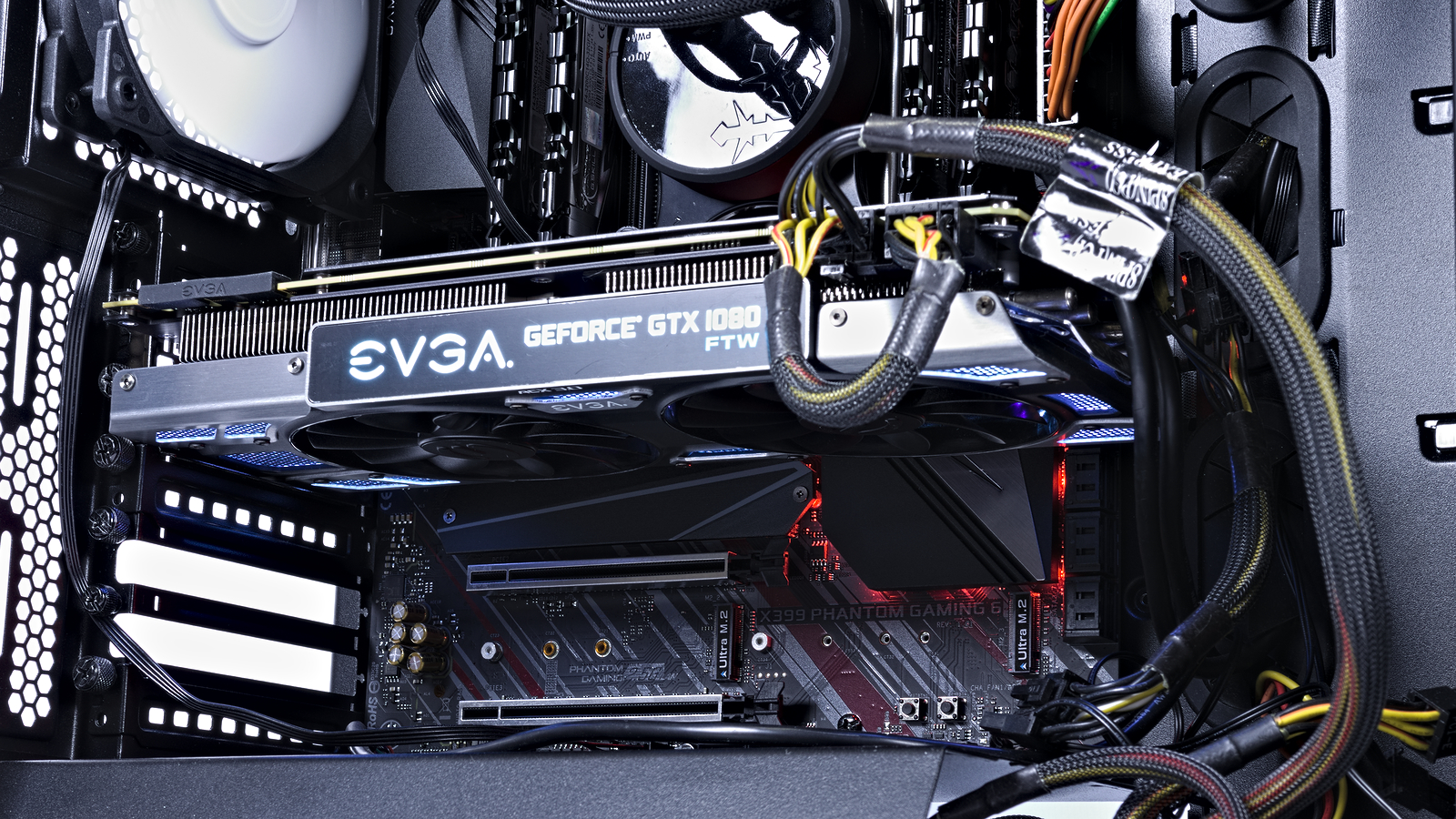

Moving up from the bottom edge, our second major concern on this X399 board is its selection of PCIe slots. Upwards of four x16 slots are traditionally provided on X399 to maximize Threadripper’s output, but the ASRock X399 Phantom Gaming 6 only wires out three. Granted, ASRock has adequately spread these apart and run the full x16 allotment to all three (instead of bifurcating some slots). This could be viewed from either a positive or negative, with respect to value versus function. Most gamers or lower-end workstation users only run single GPUs for graphics output, so massive multi-GPU capability isn’t this product's market. And there are still a variety of load-outs to choose from. You could install a single GPU and two 4k capture cards for a video production workstation, or a setup a dual-GPU render rig that needs additional network ports or the occasional external SAS card for DAS devices.
Get Tom's Hardware's best news and in-depth reviews, straight to your inbox.
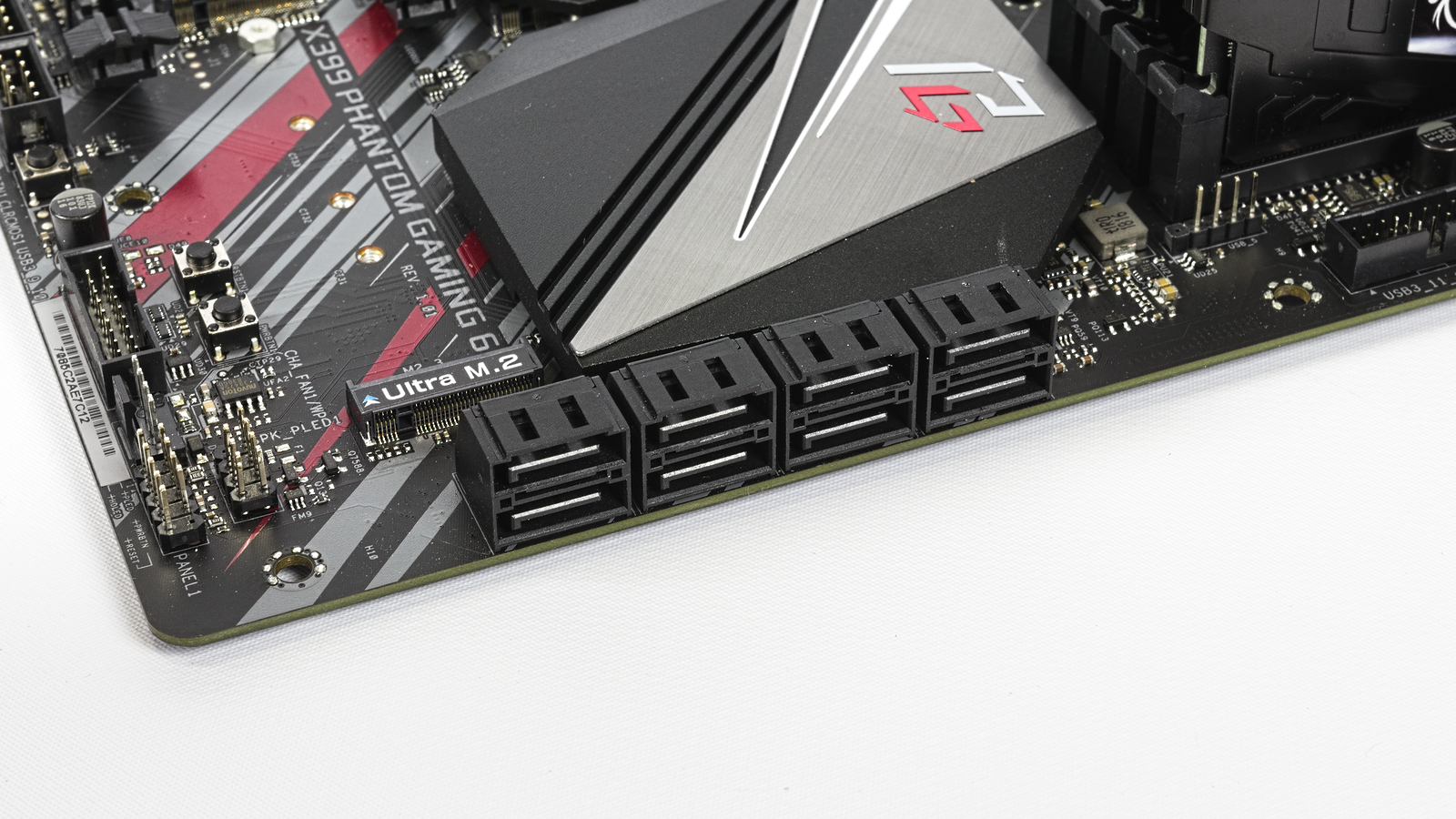

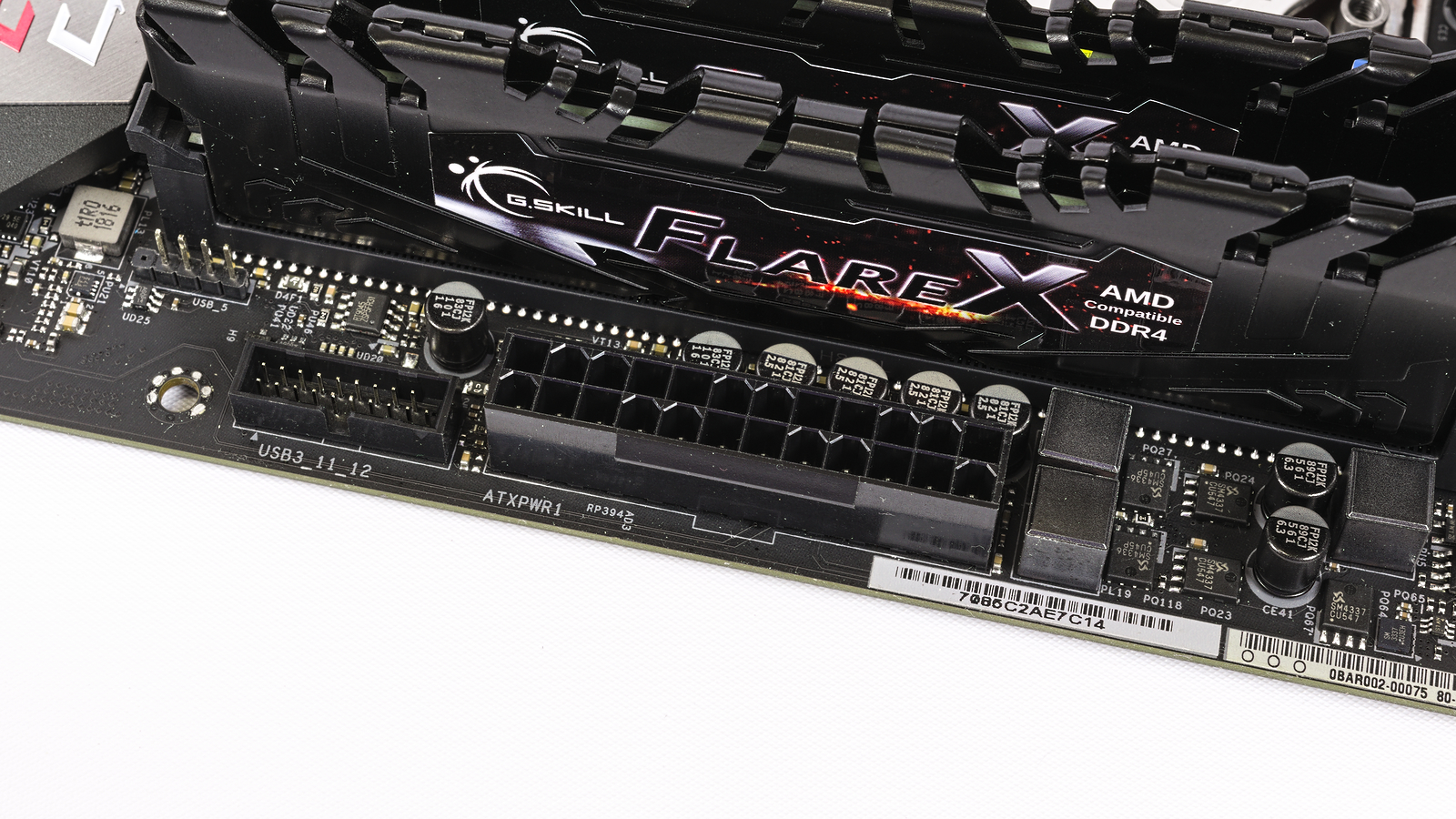
A positive note on storage devices when compared to the X399M Taichi is that the Phantom Gaming 6’s extra board real estate allows it to wire out the full Threadripper allotment of three PCIe Gen3 x4 NVMe M.2 drives and eight SATA3 ports, which support RAID 0/1/10 arrays. Also, moving up the right edge of the board, we aren’t forced to squeeze in the 2nd USB3.0 or 24-pin ATX header next to the fully-wired allotment of eight quad-channel DIMM slots.


On to the top side of the board, the remaining RGB header is nestled next to the remaining 4-pin headers traditionally allocated to CPU fans or AIO coolers. Skipping past the heatsink for a second, we were surprised to see two 8-pin EPS connectors for power to the CPU, with ample room for fat fingers. Overall, this board is simple and provides just enough of the right things to get builders in the HEDT door.
As we’ve said before, this board is not marketed towards the traditional X399 builder. It only supports Threadripper chips up to 180W (sorry, 2990WX), it has reduced PCIe ports, and fewer sets of IO. But ASRock doesn’t try to hide these details in its marketing material. We have very few nits to pick this time around. We'd like to see an angled USB 3.0 header on the right edge or the inclusion of a debug LED to assist in suspect hardware conditions. Nothing feels too cramped, and that made the installation of this board into our Corsair 570X chassis easy and straightforward. So on the surface, the Phantom Gaming 6 delivers what it aims to.
On the UEFI front, not much has changed since we tested the X399 Taichi and this Phantom Gaming 6 design. If you're curious about those features, you can check the various other articles where we’ve touched on ASRock’s X399 approach, as well as some of the quirks we’ve hit when running the latest Threadripper hardware.
MORE: Best Motherboards
MORE: How To Choose A Motherboard
MORE: All Motherboard Content
Current page: Introduction and Product Description
Next Page Test Configuration and Benchmarks